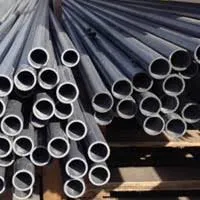
-
 Afrikaans
Afrikaans -
 Albanian
Albanian -
 Amharic
Amharic -
 Arabic
Arabic -
 Armenian
Armenian -
 Azerbaijani
Azerbaijani -
 Basque
Basque -
 Belarusian
Belarusian -
 Bengali
Bengali -
 Bosnian
Bosnian -
 Bulgarian
Bulgarian -
 Catalan
Catalan -
 Cebuano
Cebuano -
 China
China -
 China (Taiwan)
China (Taiwan) -
 Corsican
Corsican -
 Croatian
Croatian -
 Czech
Czech -
 Danish
Danish -
 Dutch
Dutch -
 English
English -
 Esperanto
Esperanto -
 Estonian
Estonian -
 Finnish
Finnish -
 French
French -
 Frisian
Frisian -
 Galician
Galician -
 Georgian
Georgian -
 German
German -
 Greek
Greek -
 Gujarati
Gujarati -
 Haitian Creole
Haitian Creole -
 hausa
hausa -
 hawaiian
hawaiian -
 Hebrew
Hebrew -
 Hindi
Hindi -
 Miao
Miao -
 Hungarian
Hungarian -
 Icelandic
Icelandic -
 igbo
igbo -
 Indonesian
Indonesian -
 irish
irish -
 Italian
Italian -
 Japanese
Japanese -
 Javanese
Javanese -
 Kannada
Kannada -
 kazakh
kazakh -
 Khmer
Khmer -
 Rwandese
Rwandese -
 Korean
Korean -
 Kurdish
Kurdish -
 Kyrgyz
Kyrgyz -
 Lao
Lao -
 Latin
Latin -
 Latvian
Latvian -
 Lithuanian
Lithuanian -
 Luxembourgish
Luxembourgish -
 Macedonian
Macedonian -
 Malgashi
Malgashi -
 Malay
Malay -
 Malayalam
Malayalam -
 Maltese
Maltese -
 Maori
Maori -
 Marathi
Marathi -
 Mongolian
Mongolian -
 Myanmar
Myanmar -
 Nepali
Nepali -
 Norwegian
Norwegian -
 Norwegian
Norwegian -
 Occitan
Occitan -
 Pashto
Pashto -
 Persian
Persian -
 Polish
Polish -
 Portuguese
Portuguese -
 Punjabi
Punjabi -
 Romanian
Romanian -
 Russian
Russian -
 Samoan
Samoan -
 Scottish Gaelic
Scottish Gaelic -
 Serbian
Serbian -
 Sesotho
Sesotho -
 Shona
Shona -
 Sindhi
Sindhi -
 Sinhala
Sinhala -
 Slovak
Slovak -
 Slovenian
Slovenian -
 Somali
Somali -
 Spanish
Spanish -
 Sundanese
Sundanese -
 Swahili
Swahili -
 Swedish
Swedish -
 Tagalog
Tagalog -
 Tajik
Tajik -
 Tamil
Tamil -
 Tatar
Tatar -
 Telugu
Telugu -
 Thai
Thai -
 Turkish
Turkish -
 Turkmen
Turkmen -
 Ukrainian
Ukrainian -
 Urdu
Urdu -
 Uighur
Uighur -
 Uzbek
Uzbek -
 Vietnamese
Vietnamese -
 Welsh
Welsh -
 Bantu
Bantu -
 Yiddish
Yiddish -
 Yoruba
Yoruba -
 Zulu
Zulu
grp stair tread
Understanding GRP Stair Treads A Comprehensive Guide
In today's construction and design landscape, safety and durability are prime considerations, especially in high-traffic areas. One innovative solution that has gained significant attention is GRP (Glass Reinforced Plastic) stair treads. These treads offer a perfect balance of strength, safety, and aesthetics, making them a popular choice for various applications.
GRP stair treads are engineered using a composite material that combines glass fibers with a resin base. This process results in a lightweight yet incredibly strong product that is resistant to the elements and everyday wear and tear. One of the standout features of GRP stair treads is their non-slip surface, which is essential for preventing accidents in environments where stairways are frequently used, such as commercial buildings, industrial facilities, and public spaces.
Understanding GRP Stair Treads A Comprehensive Guide
Another advantage of GRP stair treads is their resistance to corrosion and degradation. Unlike traditional materials such as wood or metal, GRP does not rust, rot, or warp, making it an excellent choice for outdoor installations or environments with high humidity. This durability ensures that GRP treads can withstand the rigors of time and frequent use without compromising their structural integrity or appearance.
grp stair tread

Moreover, GRP stair treads come in various designs, colors, and finishes, allowing for seamless integration into any architectural design. Whether you are looking for a bright safety color or a more subdued tone that fits within a sophisticated decor, there are options available to meet your aesthetic preferences. This customization capability means that building planners can maintain both safety and visual appeal.
Installation of GRP stair treads is straightforward, which can result in cost savings on labor. They can be easily affixed to existing stair structures or used in new builds. Moreover, the lightweight nature of GRP means that transportation and handling require less effort compared to heavier materials, further enhancing their practicality.
Additionally, GRP stair treads contribute to sustainability efforts. As a composite material, they can be manufactured with recycled components, reducing environmental impact. Plus, their long lifespan means fewer replacements and less waste over time.
In conclusion, GRP stair treads represent a modern solution to stair safety and durability challenges. Their non-slip surfaces, resistance to environmental damage, aesthetic versatility, and ease of installation make them an excellent choice for various applications. Whether for commercial, industrial, or residential settings, investing in GRP stair treads is a proactive step toward enhancing safety and longevity in construction projects. As safety regulations continue to evolve, incorporating such innovative products is not just wise but essential for risk management in any building design.









